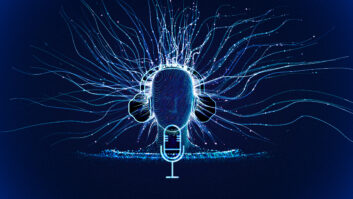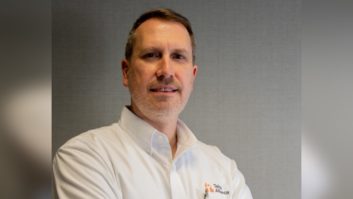What technologies are going to have “world-changing implications” on how we interact with machines and each other?
How about transmitting power wirelessly to consumer electronic devices over a distance of several meters? Helping computers to detect and recognize vehicles, humans and objects from great distances and in undesirable conditions? Ever-earlier detection of cancer risk? Or even direct communication from human brain to human brain?
IEEE is offering some fascinating suggestions. It held a panel discussion in New York this week on the topic of “human technology interactions” as part of the celebration of its 125th anniversary.
The society — 375,000 members in 160 countries — spotlighted seven technologies it thinks will be world-changers. IEEE also has posted a Webcast of the event. The featured panelists are all members, senior members or fellows of IEEE.
Here’s the organization’s own descriptions. Think big:
– Dr. Katie Hall, Chief Technology Officer, WiTricity: “Dr. Hall is implementing a new technology that can wirelessly transmit power to common consumer electronic devices within several meters of its power source. It is designed to bring the benefits of wireless power to consumer, industrial, medical, military, and transportation markets, and in the process help to save lives, energy and the environment.”
– Dr. Rangachar Kasturi, Professor, University of South Florida: “Dr. Kasturi’s team has established a framework that can detect and track text, face, and vehicles in images and video. The end goal will allow computers to detect and recognize vehicles, humans and objects from great distances and in undesirable conditions leading to quicker, more accurate detection of possible environmental, health or security threats.”
– Dr. K.J. Ray Liu, Professor, University of Maryland, College Park: “Dr. Liu and his team have developed a model that, by testing the interaction between an individual’s genomic and proteomic signaling through a simple blood test, can determine if he/she is in the transition stage to developing cancer, and identify the type. This information will offer the earliest possible prediction of whether an individual is in danger for developing cancer and allow for preventative treatment.”
– Dr. Dharmendra Modha, Manager, Cognitive Computing, IBM Almaden Research Center: “In a project funded by the Defense Advanced Research Projects Agency (DARPA) called SyNAPSE, Dr. Modha and his team are engineering computing systems that simulate the brain’s abilities for sensation, perception, action, interaction and cognition. This has the potential to greatly improve the functionality and response-rate of everyday computers and provide limitless practical applications, such as assisting financiers making split-second decisions bases on constantly changing data.”
– Dr. Miguel Nicolelis, Professor and Co-director, Center for Neuroengineering, Duke University Medical Center: “Dr. Nicolelis and his team have developed a microchip that allows human brains to communicate with robots and enables the robot to send a return message directly back to the brain, without use of sight/touch. Looking ahead, he believes his work will allow communication from human brain to human brain. The goal, by 2012, through his work and that of scientists around the world, is to enable a completely quadriplegic patient to walk again in a project entitled the Walk Again Project.”
– Mr. Krishna Palem, IEEE Fellow, Professor, George Brown School of Engineering, Rice University: “Dr. Palem developed probabilistic chip technology, a technology which trades off precision in calculations for significant reductions in energy use allowing devices such as cell phones to be recharged every few weeks rather than every few days. Using this technology, Dr. Palem has created an LED roll-up “slate” allowing access to educational materials to students in impoverished/remote areas at a very low cost and utilizing very little energy, providing an opportunity to assist with access of educational materials globally.”
– Dr. Roy Want, Senior Principal Engineer, Intel Corp. “Dr. Want is building a mobile solution called Dynamic Composable Computing that will vastly improve the performance of mobile devices and provide the capability of sharing multiple resources between computers, including displays, networks, processing, storage and peripherals. For example, if a mobile phone user does not have a camera phone; one would have the ability to wirelessly access the camera of another nearby device, assuming permission had been granted.”












